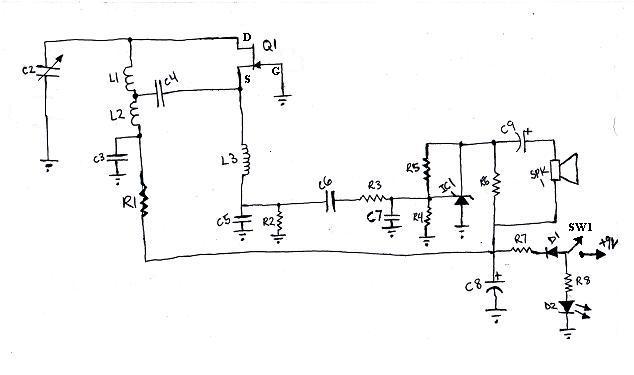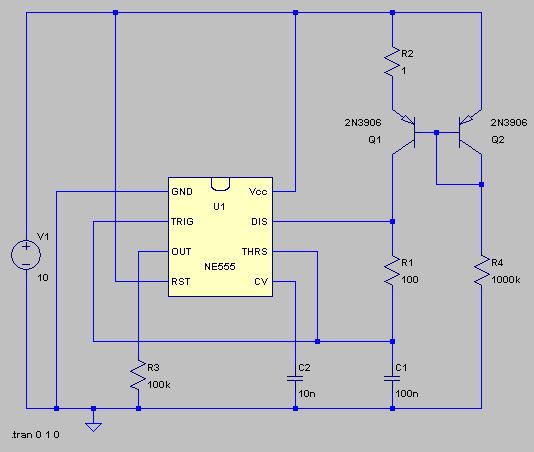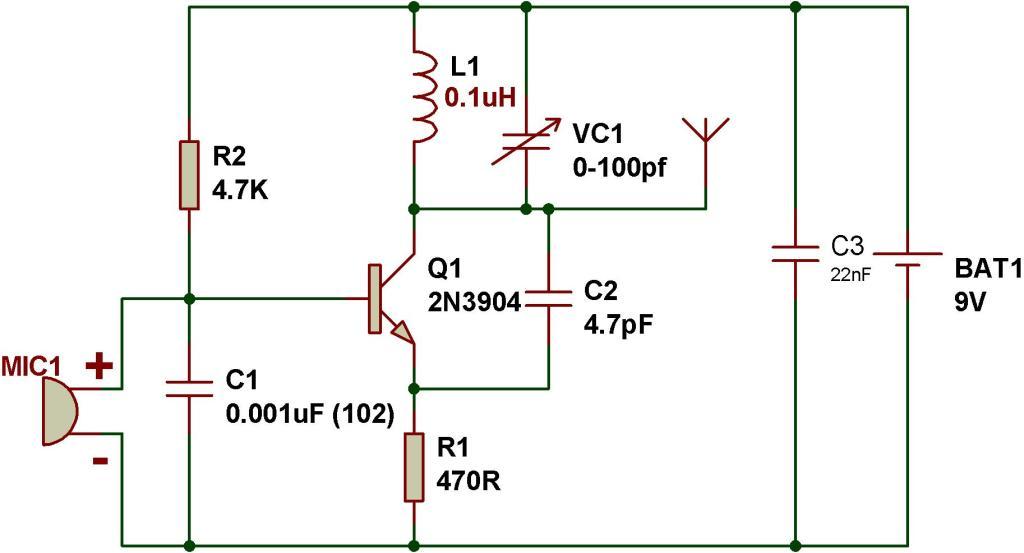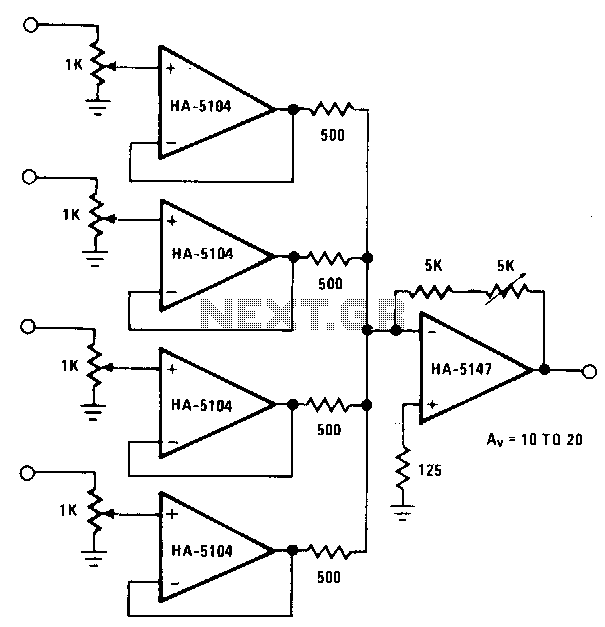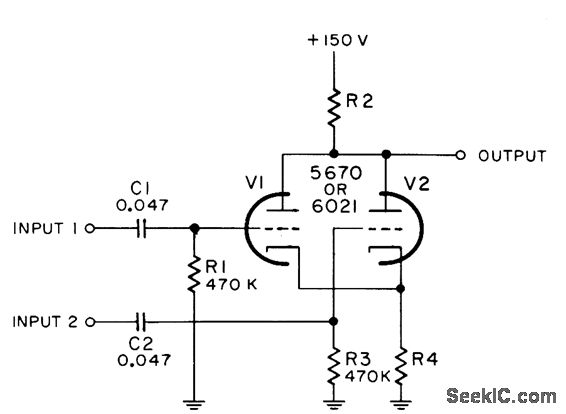
Simple Mixer
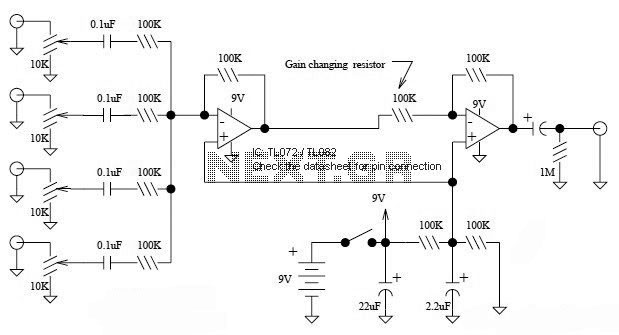
This is a simple mixer featuring four inputs and two operational amplifiers (op-amps). It is designed for mixing microphone signals or effects outputs. The overall gain from input to output is unity when the potentiometer associated with the input is fully turned up.
The circuit consists of two op-amps configured as summing amplifiers, each allowing for the combination of multiple audio signals. The four inputs can be connected to various audio sources, such as microphones or line-level effects, with each input channel equipped with a potentiometer to control the individual signal levels before mixing.
The first op-amp serves as a summing node, where the signals from the inputs are combined. Resistors are used to set the gain and ensure that the output does not exceed the input levels, maintaining audio fidelity. The second op-amp can be utilized for buffering the mixed output, providing a low-impedance output suitable for driving further stages in an audio system, such as amplifiers or speakers.
Power supply considerations for the op-amps are essential, typically requiring a dual polarity supply to accommodate the audio signal swing. Decoupling capacitors should be placed near the power pins of the op-amps to minimize noise and improve stability.
Overall, this simple mixer design is effective for basic audio applications, allowing for flexible mixing of multiple signals with straightforward gain control.Here the simple mixer with 4 input and 2 op-amps: A basic mixer suitable for mixing microphones or even effects outputs. The overall gain from input to output is one if the pot related towards the input is full up. You can make this a net g.. 🔗 External reference
The circuit consists of two op-amps configured as summing amplifiers, each allowing for the combination of multiple audio signals. The four inputs can be connected to various audio sources, such as microphones or line-level effects, with each input channel equipped with a potentiometer to control the individual signal levels before mixing.
The first op-amp serves as a summing node, where the signals from the inputs are combined. Resistors are used to set the gain and ensure that the output does not exceed the input levels, maintaining audio fidelity. The second op-amp can be utilized for buffering the mixed output, providing a low-impedance output suitable for driving further stages in an audio system, such as amplifiers or speakers.
Power supply considerations for the op-amps are essential, typically requiring a dual polarity supply to accommodate the audio signal swing. Decoupling capacitors should be placed near the power pins of the op-amps to minimize noise and improve stability.
Overall, this simple mixer design is effective for basic audio applications, allowing for flexible mixing of multiple signals with straightforward gain control.Here the simple mixer with 4 input and 2 op-amps: A basic mixer suitable for mixing microphones or even effects outputs. The overall gain from input to output is one if the pot related towards the input is full up. You can make this a net g.. 🔗 External reference
